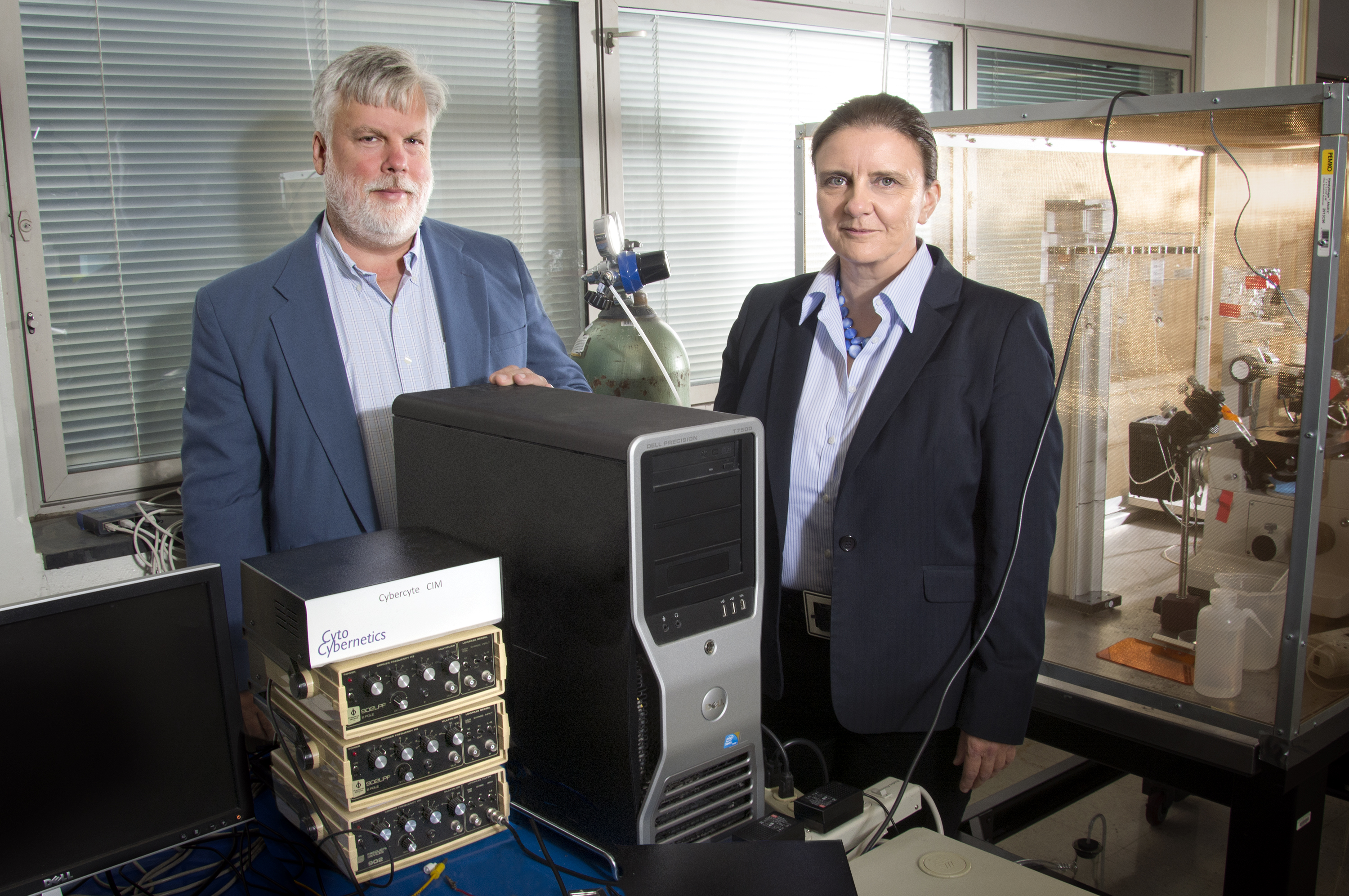BUFFALO, N.Y. — As COVID-19 infection rates and death tolls continue to rise, researchers and scientists around the world are racing to clear candidate drug therapies for COVID-19.
University at Buffalo spinoff Cytocybernetics is aiding in this effort by developing a high-tech tool called CyberQ to rapidly assess whether or not investigational COVID-19 drugs have arrhythmogenic properties that can result in sudden cardiac death — a critical step in the U.S. Food and Drug Administration’s drug approval process.
For this work, the company has been awarded $44,990 in supplemental COVID-19 funds through the National Science Foundation’s Small Business Technology Transfer (STTR) program. The funds are an amendment to an initial Phase I STTR award received by the company in June 2019, bringing Cytocybernetics’ total award sum for the project to $269,990.
“Since the late 1990s, all new drugs must demonstrate that they are safe and do not unreasonably increase the risk of sudden cardiac death. The FDA mandates cardiac risk information from all drug candidates, and most companies use a slow, laborious approach that was developed over 20 years ago,” says Glenna Bett, PhD, Cytocybernetics CEO and vice chair for research in the Department of Obstetrics and Gynecology in the Jacobs School of Medicine and Biomedical Sciences at UB.
To replace this outdated process, CyberQ utilizes advanced computer models and machine learning to quickly analyze electrophysiological data from a variety of in-vitro assays and accurately determine if new drugs may produce cardiac arrhythmias that could lead to patient death.
“The COVID situation requires quick answers to drug risk, but skipping or paying inadequate attention to this safety test can lead to serious problems, which may only become apparent when the drug is widely used. We are partnering with the FDA to produce a simple yet powerful analysis of drug data to determine the clinical risk of a drug candidate,” Bett explains. “This new process is designed to reduce the time to bring a drug to market, and to increase the clinical relevance of the preclinical drug safety testing, resulting in fewer post-market adverse events. Shortening the time and increasing the accuracy of this testing will bring down the cost of commercializing a candidate compound.”
Cytocybernetics senior software engineer Leigh Korbel, who graduated from UB with a master’s in physics and advanced certification in computational science, is the lead investigator on the NSF-funded project.
According to Bett, the older FDA process for determining the cardiac safety of drug candidates often resulted in large errors in early stages of drug development, resulting in premature abandonment of promising drugs. Along with safety tests for new potential therapies, Cytocybernetics’ software uses artificial intelligence to reexamine old data to recognize such drugs.
“The net result is that drugs that were well along in development that have the potential to be part of the solution to COVID-19 can be ‘resurrected’ to fight the disease much more quickly than starting from scratch,” says Randall Rasmusson, PhD, co-founder of Cytocybernetics, and a professor of physiology and biophysics in Jacobs School of Medicine and Biomedical Sciences.
UB is dedicated to supporting startups founded on innovations from its faculty and students. In recent years, initiatives and programs led by the Office of Business and Entrepreneur Partnerships (BEP) have connected growing startups like Cytocybernetics with funding, space, facilities, expertise and business mentorship to help them reach key business milestones.
“We’re proud to see UB spinoff companies like Cytocybernetics making progress in developing technologies that solve an urgent market challenge and can impact millions of lives,” says Christina Orsi, UB associate vice president for economic development. “We’re always looking to connect with more faculty and students who have innovative ideas that can benefit society, so we can help them determine whether there’s a commercial opportunity for their innovation and, if so, a path to market.”
